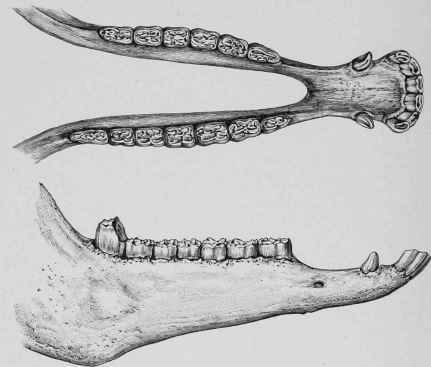Irregularities And Diseases Of The Teeth
Description
This section is from the book "The Horse - Its Treatment In Health And Disease", by J. Wortley Axe. Also available from Amazon: The Horse. Its Treatment In Health And Disease.
Irregularities And Diseases Of The Teeth
Since the advent of so-called horse-dentists, and the prominence given to the subject in connection with the illness of the Duke of Westminster's "Orme", the horse-owning public has been awakened to the importance of the teeth as affecting health, and more particularly digestion, in horses. While not endorsing all the extravagant pretensions of the dentists, we are inclined to think that insufficient attention and even neglect of the teeth may be held to account for many of those obscure cases of failure in general health which are seen from time to time in our horse patients. Dentition in relation to age is considered in another part of this work, and we wish here only to call attention to those diseases or abnormal conditions which interfere with the proper mastication and insalivation of food, or cause pain and inconvenience to the animal.

Fig. 120. - Lower Jaw of Horse, showing Numerical Excess of Molars on the Right Side.
Irregularities of the teeth may have reference to the process of shedding, to numbers, to growth, and to wear. The majority of colts cast their primary teeth without assistance, and it is only when they are seen to dribble or drop their food that they receive any special attention.
The inflamed gums or Lampas elsewhere referred to may have its origin in the pushing up of the new tooth while the primary one still retains a loose hold upon the gum. In these cases the fang is already absorbed, and the offending crown may usually be removed with ease and without danger. This is done by means of dental forceps. It is a simple operation, requiring only that the neck of the tooth be seized by the instrument, while sufficient care is taken not to injure the growing tooth beneath, or the socket of the jaw in which they are contained. Lancing the tumefied gums is sometimes resorted to with good results.
Continue to:


